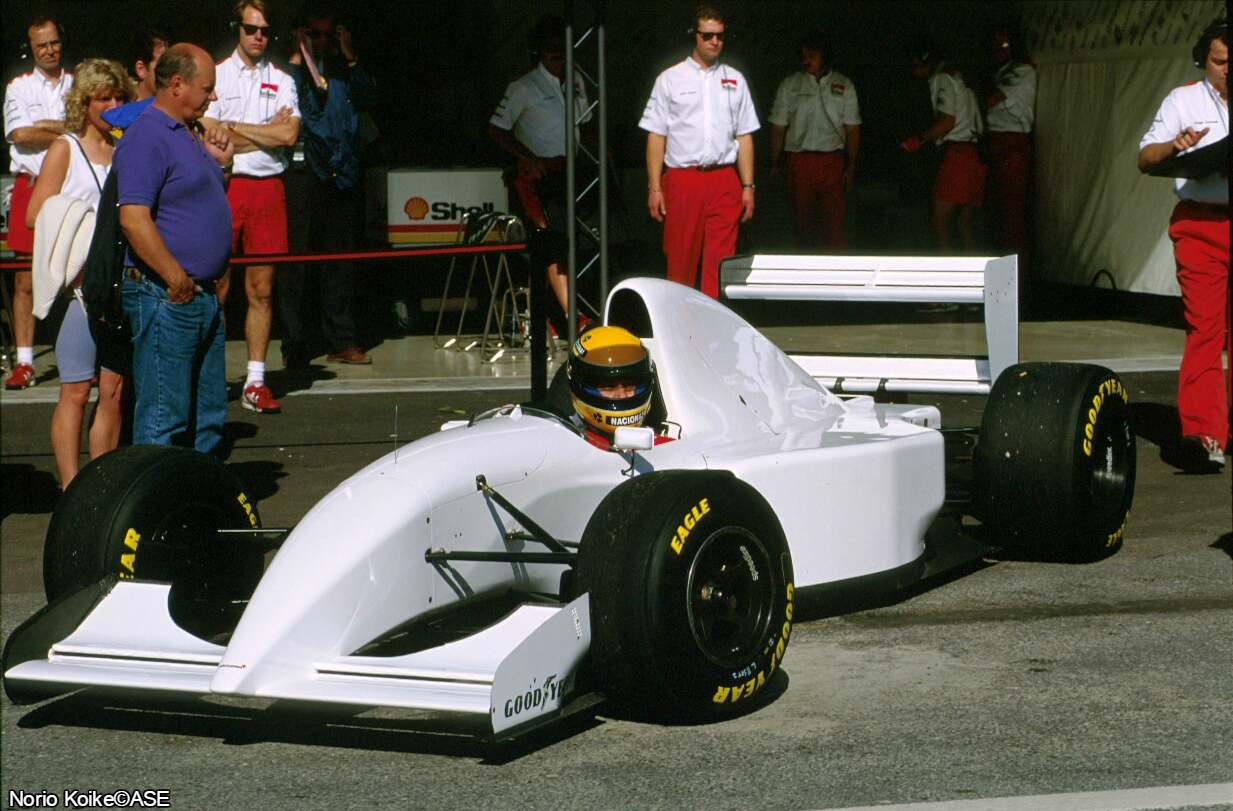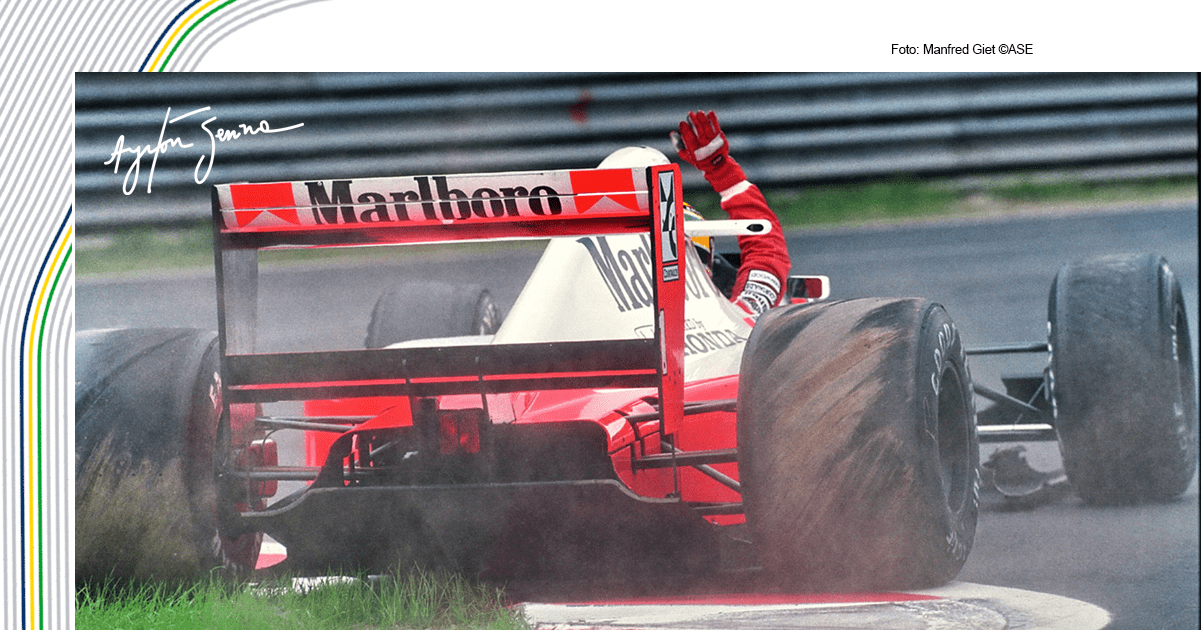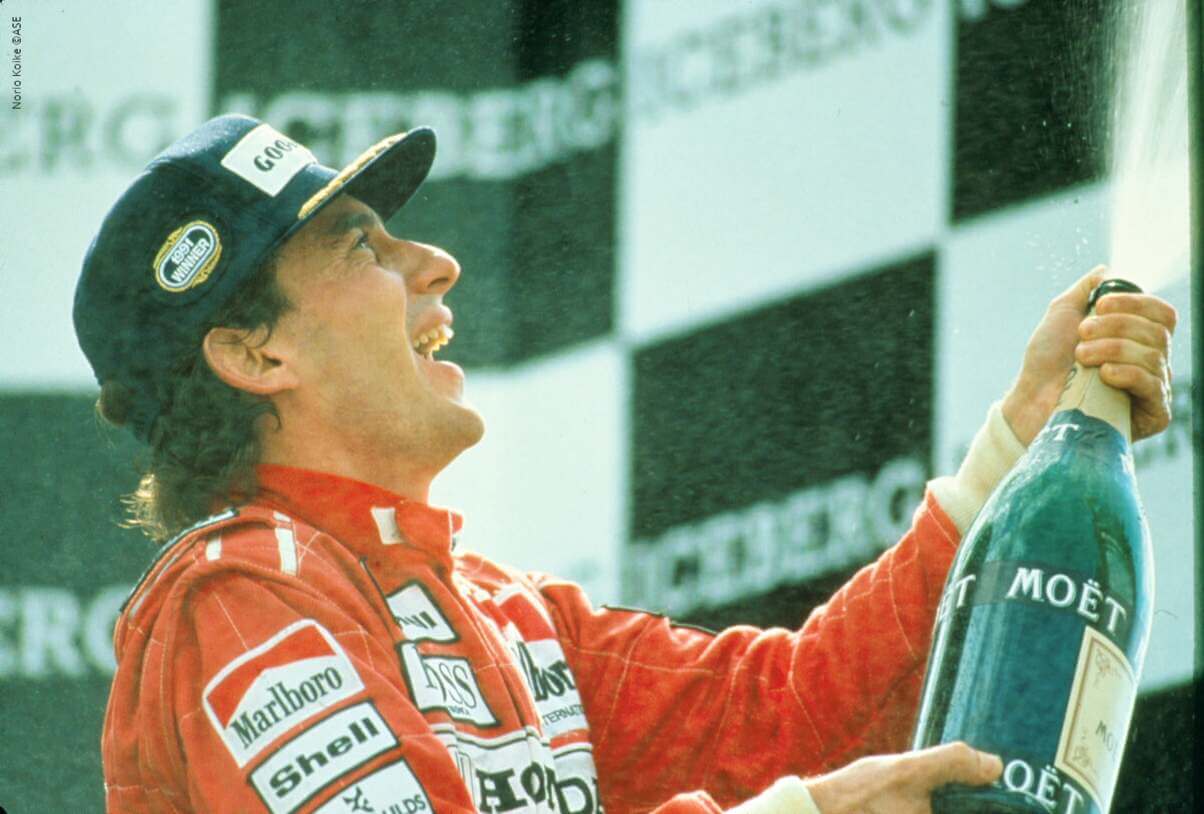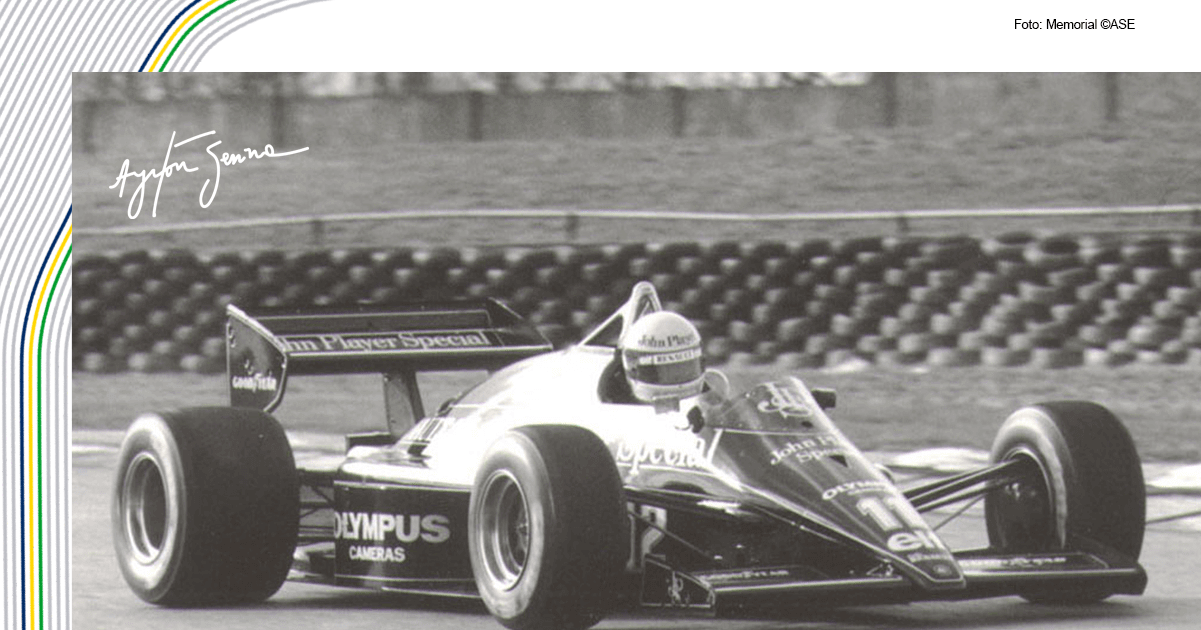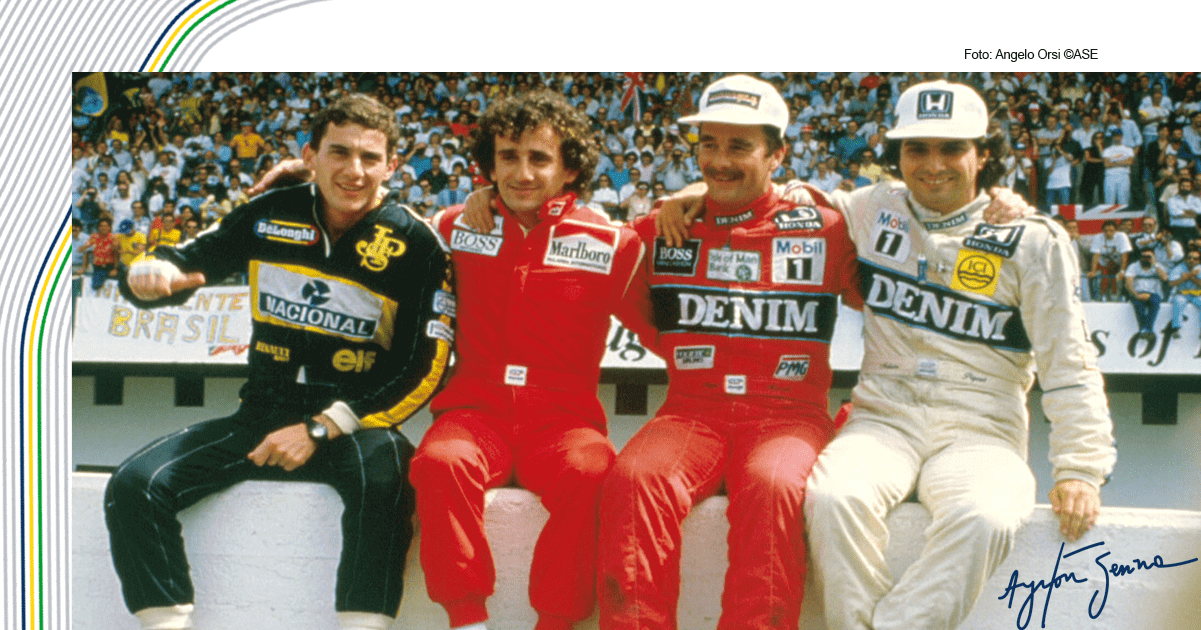One of the most intriguing episodes in Ayrton Senna’s career was his test with a McLaren powered by a Lamborghini engine in 1993. Unhappy with the Ford-Corsworth motor they had been using that season, the British team was considering a partnership with a new engine-maker for 1994.
The most striking moment of a period marked by uncertainty took place on September 20, 1993, when Senna took to the Estoril racetrack, in Portugal, behind the wheel of a completely white McLaren. It was the McLaren Lamborghini MP4/8B – in the same setting where the driver had won for the first time in F1 eight years before.
The search for a new engine was more than justified. After all, the three-time F1 world champion himself was already considering his options in case the British team was unable to put together a good technical package. The Brazilian ended up announcing his move to Williams starting in the following season.
Car details
Ron Dennis, McLaren’s principal, was looking for a 10 or 12-cylinder engine in order to stay competitive with the Williams and Benettons. Senna had conversations with engineer Mauro Forghieri and demanded a more effective car, with lots of torque at mid rev range and softer at high RPM.
To put things in perspective: McLaren’s Ford-Cosworth tailor-made engine was approximately 50 hp less powerful than Ford’s factory model, which Michael Schumacher and Riccardo Patrese had in their Benettons. And it performed even worse when compared with the Williams: it had around 80 fewer horsepower than the Renault engine used by Alain Prost and Damon Hill.
This fact alone, by the way, makes Senna’s wins that year all the more impressive, like his triumphs at the Brazilian GP and Donington park (with a little help from the rain on both occasions).
The engine developed by Lamborghini was 70 hp more powerful than the one McLaren was using in 1993, besides being a V12. Senna was pretty excited with these numbers.
Lamborghini in F1
Chrysler, an American company, bought Lamborghini in 1987, and one of its main goals was to compete in F1. In 1989, they started supplying engines to Lola, one of the smaller teams on the starting grid. In 1990, the brand expanded its activities and became Lotus’ engine supplier.
In 1991, Modena’s and Ligier’s cars were powered by Lamborghini engines. That season was a total bust, since neither team scored a single point. In 1992, the chosen teams were Minardi – home of Brazilian driver Christian Fittipaldi – and Larousse. In 1993, only Larousse still had a Lambo engine. In total, they took part in 80 GPs.
Testing the “McLambo”
Senna’s first test with the Lamborghini engine took place on September 23, 1993, with a completely white car, without any sponsors. The Brazilian was excited with the new machine, but he was taken by surprise when McLarem signed with Peugeot, who ended up supplying the British team with 10-cylinder units in the following year.
Mika Hakkinen, who was McLaren’s test driver up until the 13th race that year, took over as the team’s second driver at the Portuguese GP, after Michael Andretti’s disappointing performance in the category. Afterwards, at Silverstone, the Finn also tested the Lamborghini engine, and ended up posting a time 1s2 better than the one set with Ford engines during the 1993 British GP weekend.
Those results meant that Senna wanted to use the new engine in the season’s three final races (Portugal, Japan and Australia). However, the three-time champion admitted that it needed more power and finesse in order to become competitive. “I’m sure it will be a great engine in the next season”, said Ayrton at the time, while he was still pondering his own destination in the 1994 season.
The Peugeot engines chosen for 1994 didn’t last more than a season in the team. After Ayrton left to Williams, McLaren didn’t win any races in 1994 and switched engines again in the following year, forging a long-lasting partnership with Mercedes (1995-2014), which peaked with Hakkinen’s world titles (1988 and 1999) and Lewis Hamilton’s first F1 title (2008).
Backstage
Few people knew, at the time, that McLaren already had a financial deal in place with Peugeot even before the tests with the Lamborghini engine, and that’s why negotiations with Lambo stalled. The information comes from Martin Whitmarsh, in an interview to British author Tony Dodgins, published in his book “Ayrton Senna: All His Races”.
Whitmarsh was one of McLaren’s bosses, alongside Ron Dennis, and he talks about the day they visited Lamborghini’s headquarters.
“Lamborghini showed us the latest telemetry data and the engine was fantastic, with 60 hp more than the one we had we had (Ford) and 66 fewer pounds. But I didn’t believe the figures because I could see how slow those cars (Larousse’s) were. I remember we went over to Lamborghini and hooked the engine up to a dyno, and the needle actually reached the hp numbers they were talking about”, said Whitmarsh.
Senna’s disappointment
“In the end, we didn’t believe Chrysler was going to keep their promise (of developing the engine) and made a deal with Peugeot for 1994. We had the test with the Lamborghini engine lined up but, due to contractual obligations, I told Dave Ryan, the team manager, what was supposed to happen (during the test). The car couldn’t go any faster than X. If that happened, we’d have serious contractual problems. And then I added, ‘Don’t worry, though, it won’t (happen)’.
“Dave called me from the track and said, ‘Look, I can’t stop this car from speeding up. It’s really fast. It’s looking really good and it has Ayrton inside’. So, I told him to fill it with 220 pounds of fuel and not mention it to anyone.
“It was a huge mess, and I had to manage it. But Ayrton, obviously, realized that it was faster than with the Cosworth engine and he wanted to compete with a Lamborghini engine in the year’s final three races. He was really upset when we didn’t do it”.
Even without the Lambo motor, McLaren performed better late in the season, winning the final two races in Japan and Australia – which ended up being Senna’s final wins in Formula One. After the disappointment with McLaren, Lamborghini never raced again in the category.
